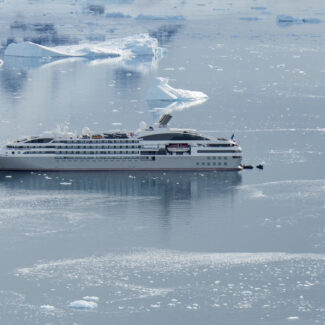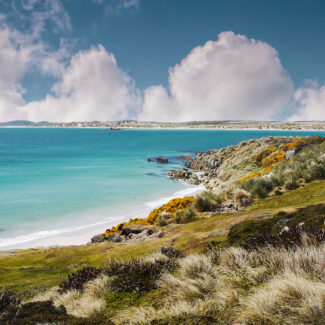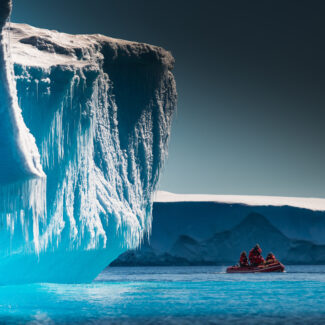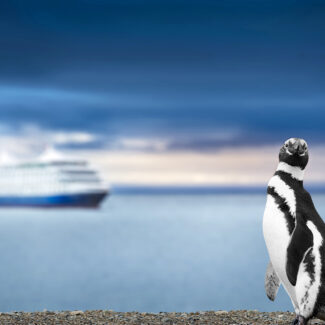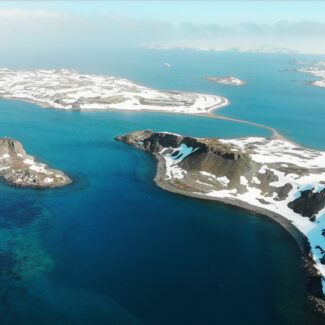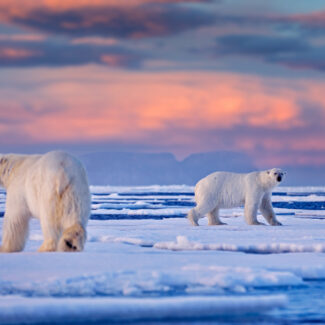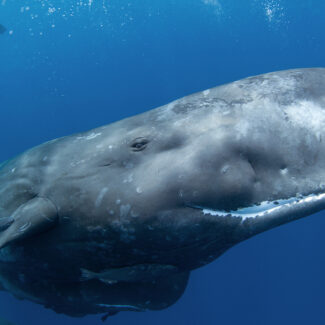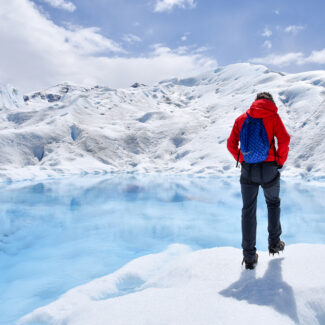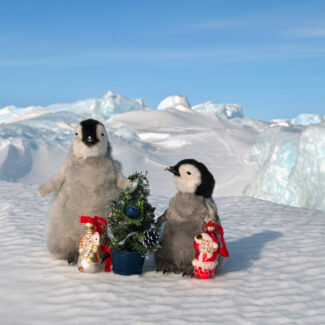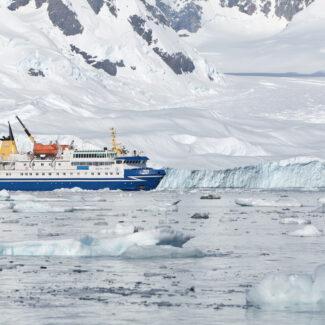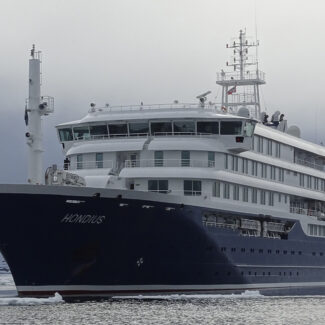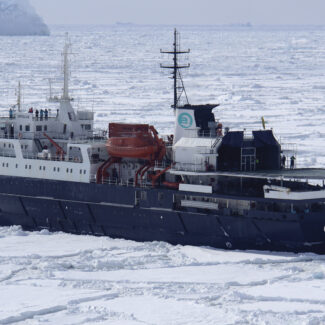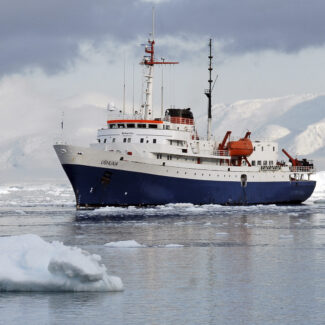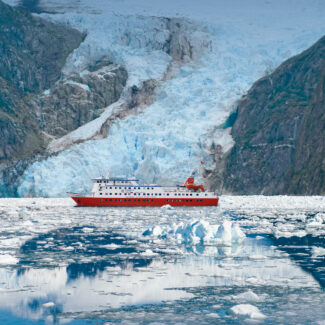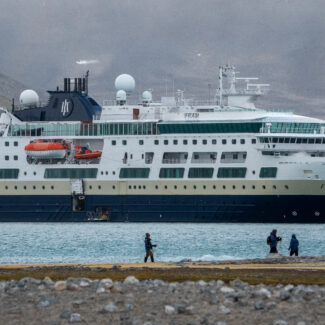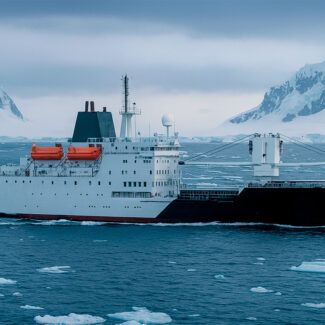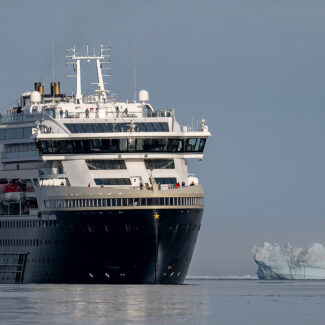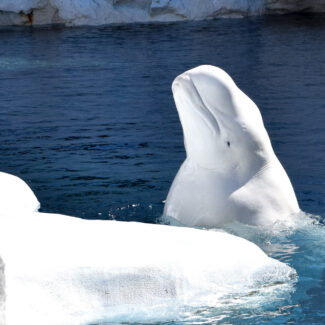The Polar Paradox: Why Are There No Penguins In The Arctic?
Are there penguins in the Arctic? Well, as the title of this here article has already given away, the answer is a firm “no.” More than a few folks have the misimpression, however, that those black-and-white seabirds—along with the Galapagos’ flightless cormorant the only flightless diving birds currently calling Planet Earth home—do waddle around the North Pole, rubbing shoulders with polar bears and Santa Claus.
Speaking of polar bears, there’s a parallel misconception that those hulking carnivores roam Antarctica, thereby putting them into penguin territory. Well, in fact, there are no polar bears anywhere close to the Antarctic, just as there are no penguins anywhere close to the Arctic.
But dispelling these myths raises interesting points about biogeography and evolution. Let’s dig into why there are indeed no Arctic penguins while celebrating the incredible birdlife you can enjoy while cruising around the top of the world!
Many people think of penguins and polar bears as inhabitants of the same region, but these animals live on opposite ends of the world.
Penguin Distribution
There are 18 to 20 species of modern penguins, and all but one are found firmly south of the equator. The one exception is the Galapagos penguin, which inhabits the Galapagos Islands, a famously wildlife-rich Pacific Ocean archipelago some 560 miles west of the Ecuadorian coast and sitting right about on the equator (yet cooled by the Humboldt Current). This means the islands’ endemic penguin technically swims its way into the Northern Hemisphere—but just barely.
The Galapagos penguin is one of only a handful of penguins to reach tropical waters, the others being the Magellanic penguin and the African penguin—both of which, however, are primarily subtropical-temperate species.
The vast majority of penguin species inhabit temperate and sub-Antarctic waters of the Southern Hemisphere, with—and this may come as a surprise—only two species being completely restricted to the Antarctic: the Adélie penguin and the emperor penguin, the latter the largest of its kind. The core of penguin diversity is New Zealand and its Southern Ocean islands.
Of the 18 species of penguin, only two (the emperor and Adélie) actually inhabit the Antarctic continent. The others live in the Sub-Antarctic and even temperate regions.
Evolution of Penguins
Indeed, temperate Oceania seas in the neighborhood of New Zealand and Australia are thought to be the evolutionary cradle of modern-day penguins, which came on the scene about 20 million years ago (derived from a flying-bird ancestor farther back in deep time). From that temperate realm, penguins dispersed southward into polar waters of the Southern Ocean and Antarctica as well as northward into subtropical and, eventually, even tropical latitudes.
These expansions as well as subsequent speciation and diversification were likely facilitated by the development of major ocean currents, including the Antarctic Circumpolar Current, aka the West Wind Drift, which surges along the northern boundary of the Southern Ocean and helps isolate the polar realm of Antarctica from the rest of the planet. Patterns of sea ice in the Southern Ocean during glacial and interglacial periods surely also impacted penguins, including by giving them a stepping-stone, for example, into South American waters.
And the aforementioned cold, north-flowing Humboldt Current off western South America and the analogous Benguela Current off southwestern Africa also probably helped facilitate that northward spread of penguins into the subtropics, as their cooler flow—and the productive upwellings associated with them—provide good habitat for what’s mainly a coldwater-adapted seabird.
The fact that those cold Southern Hemisphere boundary currents don’t extend north of the equator is, along with the warmer, less-productive waters of the tropical belt, a major reason why penguins haven’t been able to expand their range into the Northern Hemisphere to any significant degree.
A view into the evolutionary past: two yellow-eyed penguins, also called Hoiho, stand on a cliffside, a reminder of the millions of years of evolution that led these birds to the Southern Hemisphere.
Penguin Analogues in the Arctic & Subarctic
While the closest relatives of penguins are thought to be the tube-nosed seabirds—albatrosses, petrels, and kin—they have somewhat closer ecological counterparts, roughly speaking anyway, up in far northern waters: the unrelated seabirds called alcids, or auks. The nearest analogue to the penguin in the Northern Hemisphere in historical times was the great auk, biggest of modern alcids at around 80 centimeters in length and, like penguins, a flightless, strikingly black-and-white-patterned diving bird.
Its tale is a tragic one, no question. Found mainly in temperate and subarctic waters of the North Atlantic, the great auk—whose most notable feature, aside from its tuxedo plumage and proportionately spindly wings, was its massive bill—was rather rapidly slaughtered into extinction during the 19th century by humans, who hunted it for meat, down, and fuel for fires. The last documented great auks were killed in the summer of 1844 on the species’ final refuge, the blocky sea-stack isle of Eldey off the southwestern coast of Iceland.
In fact, the word “penguin” is derived from the great auk, the only member of the genus Pinguinus; true penguins were named for their resemblance to that Northern Hemisphere alcid.
The much smaller razorbill is the great auk’s closest surviving relative, though, like all other living alcids, it can fly. Nonetheless, in their primarily black-and-white plumage, stubby bodyplan, and exceptional diving skills, the alcids—which also include guillemots, puffins, murres, murrelets, auklets, and the dovekie—certainly have a bit of penguin-ish spirit about them.
Atlantic puffins and other Arctic-dwelling seabirds known as “alcids” are considered the penguin-like birds of the northern hemisphere.
Could Penguins Survive in the Arctic?
So, alcids such as puffins are pretty much the closest thing we’ve got to penguins in the Arctic. But let’s do a little hypothetical: If you were somehow to transfer penguins from their Southern Hemisphere abode, fly them over those generally unfavorable equatorial waters, and plop them down beyond the Arctic Circle, could they survive?
Well—if you chose a polar/subpolar species for your ill-advised “playing-God” experiment—penguins would presumably be just fine with the Arctic’s frigid seas, ice, and food supply, eaters as they are of fish, krill, and squid. But they’d find themselves in an environment with nastier terrestrial predators than those faced by many penguin species. Penguins would be generally naive in the face of polar bears, Arctic foxes, and Arctic wolves, though Magellanic penguins in South America are taken by pumas and foxes, and African penguins face danger from such four-legged hunters as caracals and jackals. But many penguin species nest in places, such as New Zealand, sub-Antarctic islands, and the White Continent of Antarctica itself, which historically lacked native land-based predators.
A number of penguin species—mainly those of the Southern Ocean polar realm, including Antarctica proper—also evolved without the pressure of human hunting (though in modern times they’ve certainly been exposed to it), something that’s been a factor in the Arctic for millennia.
In terms of marine predators, all penguins are familiar with that kind of threat, taken as they are by various pinnipeds (not least the imposing leopard seal), orcas, and sharks. Up in the Arctic, they’d presumably have to try and dodge killer whales, plus walruses (which are known to occasionally hunt seabirds and even seals) and sleeper sharks, to name a few probable aquatic enemies.
While penguins are well-adapted for cold climates, the Arctic’s landscape and unique predator population would present a difficult challenge.
Experience the Thrilling Wildlife of the Arctic (and the Antarctic!)
So, just to drive home the point: Do penguins live in the Arctic? Absolutely not! Just as polar bears aren’t doing their thing down in the Antarctic.
If you want to spot penguins, therefore, you’ve got to point your boots southward. Trips to the Galapagos, Patagonia, South Africa, Australia, and New Zealand can be good bets, but it doesn’t get much more iconic than foraying into the Antarctic to see that other mighty polar kingdom’s penguin lineup—not least the world-famous emperor penguin, which, astonishingly, actually breeds on the White Continent in the very midst of its fearsome winter.
Of course, Arctic cruises also offer some of the finest wildlife-watching in the world, even though penguins aren’t part of the equation. There are many amazing seabirds to goggle at, not least those equally endearing puffins and the far-traveling Arctic terns (which calls both the Arctic and the Antarctic home), plus bowhead whales, narwhals, belugas, various seals, polar bears, Arctic foxes, muskoxen, caribou, snowy owls—well, the list goes on and on!
A once-in-a-lifetime encounter: two polar bears playfully emerge from the frigid Arctic waters. See how they thrive in a land many don’t even know exists.
And if you happen to cruise to Iceland—that tantalizing land of volcanoes, glaciers, hot springs, and lots, lots of puffins—you might also gaze wistfully offshore and raise a glass to the sadly departed great auk, the remarkable “northern penguin” that made its last stand there.
Disclaimer
Our travel guides are for informational purposes only. While we aim to provide accurate and up-to-date information, Antarctica Cruises makes no representations as to the accuracy or completeness of any information in our guides or found by following any link on this site.
Antarctica Cruises cannot and will not accept responsibility for any omissions or inaccuracies, or for any consequences arising therefrom, including any losses, injuries, or damages resulting from the display or use of this information.


